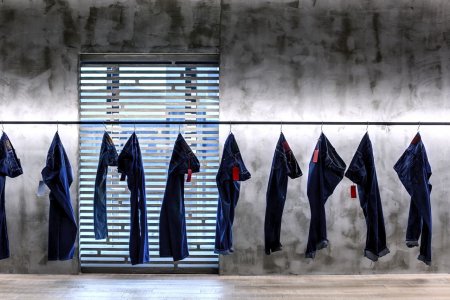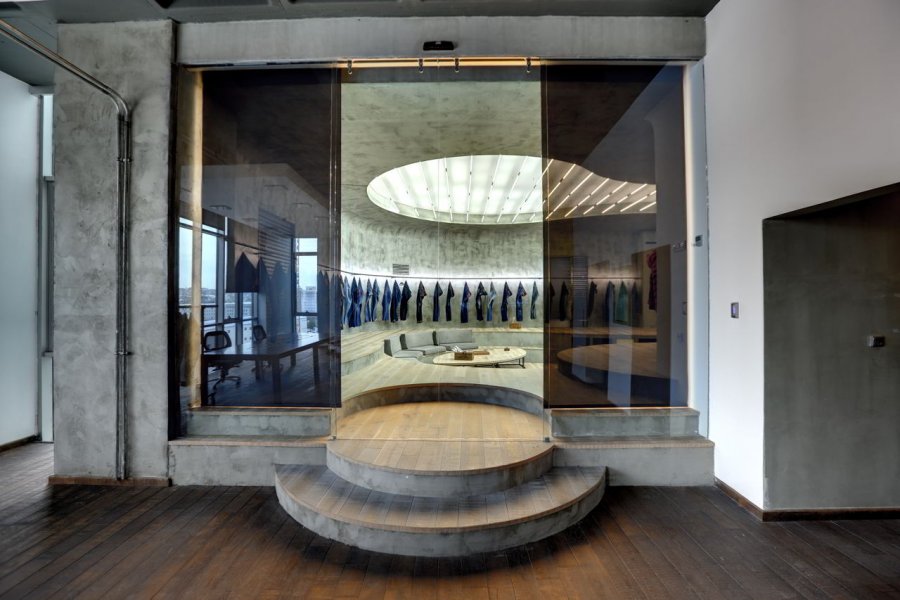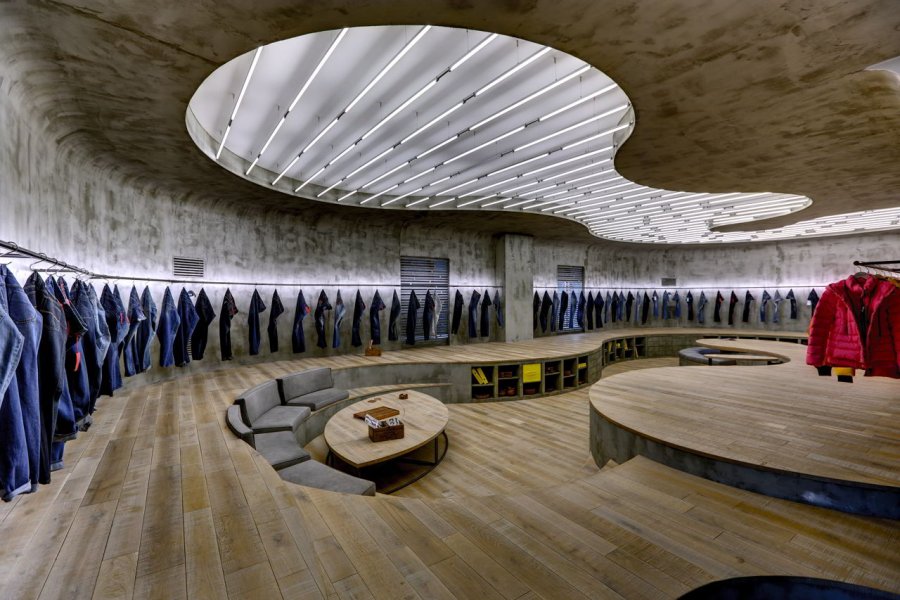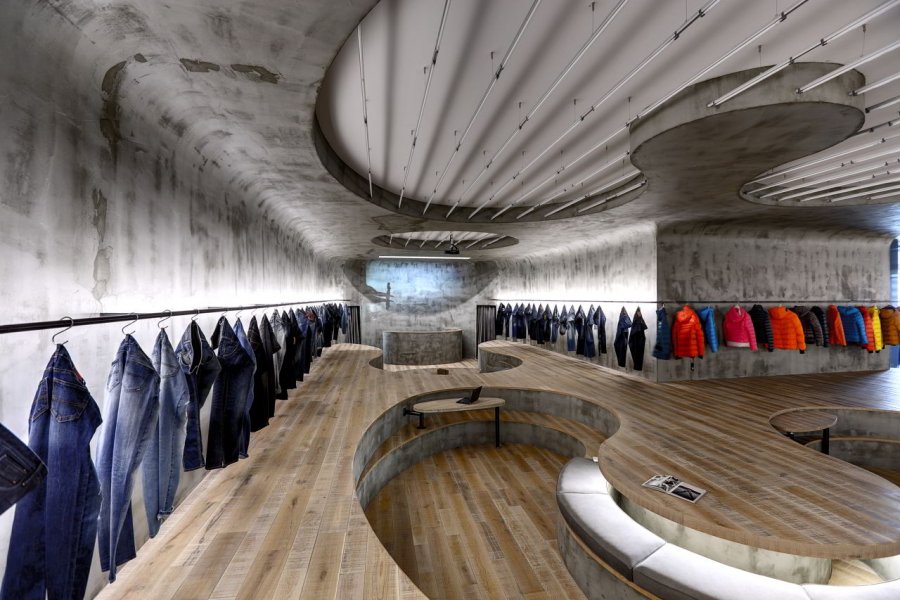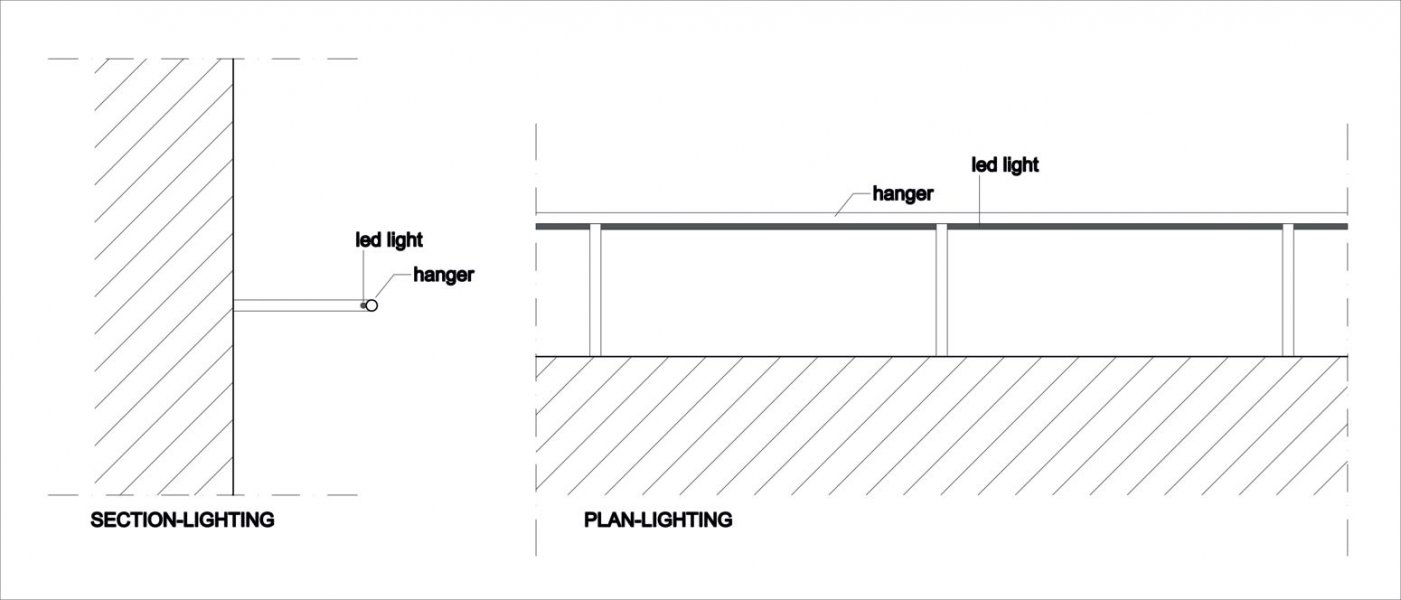What does it mean when we talk about R&D – Research & Development – in the fashion world? A pair of jeans
is a pair of jeans, and technology is technology. The bottom line, however, is that a high-quality product must not only look good; it must also be well-made. This obviously gave rise to such a wide range of open questions in this particular company that an R&D centre needed to be set up in order to put things straight...
Many probably think it is the most normal thing in the world to market a pair of jeans as a high-quality design product. Jeans were originally developed as working men's clothing, a product for lumberjacks, miners, cowboys. In the meantime, fashion has become so sophisticated that jeans with frayed holes worked into them are referred to as distressed jeans and a sign of good taste. What might have been regarded as a flaw in the past is top fashion today. That is marketing. Even the holes in Swiss cheese have become a factor of value.
Product quality does not rely solely on design; it is a philosophy that stems from the way of life promoted by the society we live in. Incorporating this into a work environment, and ensuring it is also functional, is definitely a challenge. And it is pretty special to find yourself working in an R&D department where the walls are draped with apparently shoddy denim wear. And yet that is exactly what the Denim project in Istanbul is all about.
Blue jeans lined up along grey, morbid-looking walls create the required contrast defined by the architectural design. To underline and reinforce this concept and enhance the scenic quality of the space was a real treat for the lighting designers. A grey wall cannot have any effect if the space is diffusely lit. The designers therefore used a simple backlighting technique to generate visual tension and create something unique out of a backdrop that smacks of the ordinary. Comparable to making a design concept out of a pair of ripped jeans.
It is the combination of materials, colours and light that secures the success of the design. And the great thing about this concept is that it demands no complex ideas, design or installation effort to work convincingly. You might go as far as to say that the design is so good that it requires very little means and only simple solutions to
work. That is the initial impression. And yet it is the concept of contrast that seals the deal.
The space is basically designed as an R&D studio within the headquarters of a textile company. The design concept was built around the physical relations between the users of the space (R&D personnel) and the products, accessories and materials. It was observed that actions of sitting, walking, working, evaluating the products by comparison somehow limited the R&D function of the area. A space needed to be designed that would enable flexibility of working in motion and accessing the overall space rather than being confined to a limited area. The concept was based on establishing a platform which would allow more scope for creative work instead of using desk configurations that would restrict usable space and accessibility.
Instead of defining the locations of actions the R&D staff can easily access every part of the room, and observe the denims, fabrics and accessories from different distances alone or together with colleagues. The intention was to increase and diversify the possibilities of interaction of the users with one another and the space. This was achieved by introducing different floor levels, the curvilinear form of which supports the idea of fluent, flexible movement. A small palette of materials was selected to realise the "plain and simple" design. The same applies to the lighting: besides some discreet vertical daylight openings, the artificial lighting is reduced to daylight white LED lighting integrated into the clothes rails and strictly aligned rows of linear fluorescent pendant luminaires across the ceiling cutouts.
It is wonderful to see how a morbid looking backdrop can be transformed into a designoriented space. But then anything is possible if the setting is right.
Project team:
Client: Bulur Textile
Architecture and design: Zemberek
Design – Başak Emrence, Şafak Emrence, Ece Ilgın Avcı
